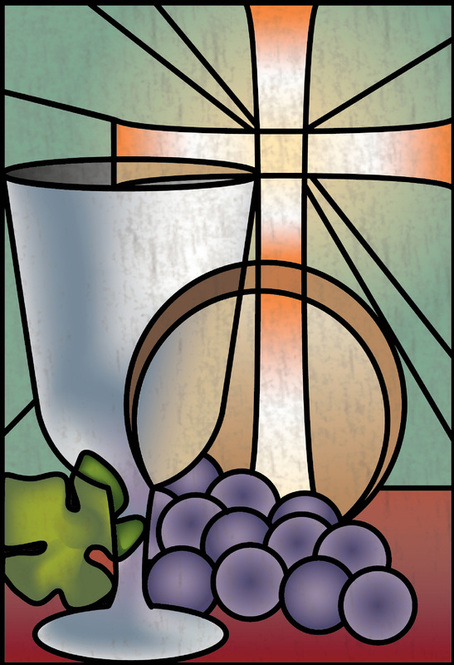Communion
|
Communion is one of the two sacraments of most Protestants churches, including The United Methodist Church. It is a ritual begun by Christ at the "Last Supper," in which, as He shared with them The Cup and The Bread, He instructed his Disciples/followers to "do this remembering me." From the beginning of The Church, Christians have participated in this practice to remind them of Christ's redeeming love. Jesus said of the bread, "This is my body, given for you" and of the cup, "This is my blood shed for you, and many, for the forgiveness of sin." Spoken just hours before His crucifixion, it is a powerful reminder that our redemption is through Christ.
WHO MAY RECEIVE? United Methodists observe "open communion," meaning all persons of Christian faith are welcome to receive. Indeed, Methodism's founder, John Wesley, called communion a "converting sacrament," meaning persons seeking to come to Christ are invited to participate! THE "ELEMENTS" United Methodists use grape juice (as opposed to fermented wine); the juice is either presented in individual cups or in the larger chalice, as pictured here. Our bread may be a whole loaf, broken to distribute to each; or it may be individual wafers. HOW WE RECEIVE COMMUNION There are many ways to share communion. In the past, it was most common for individuals to come and kneel at the prayer rail, where the servers would bring the bread and then the juice for each person; this is still the occasional practice. Most often today, however, those receiving communion do so by "intinction:" Exit from their pew as directed by an usher, and join the short line near the front of the sanctuary. When you reach the front of the serving line, you will be presented with the bread, and then immediately the cup. Take your piece of bread and dip it lightly into the cup; then "partake," that is place it in your mouth to eat. The server will often say something like, "The bread/blood of Christ, given for you." You may respond if you wish with something like "Thanks be to God!" or "Thank you, Lord." After receiving communion, you will circle back to return to your seat. Before returning to their pew, many persons pause to kneel at the prayer rail and pray. |

